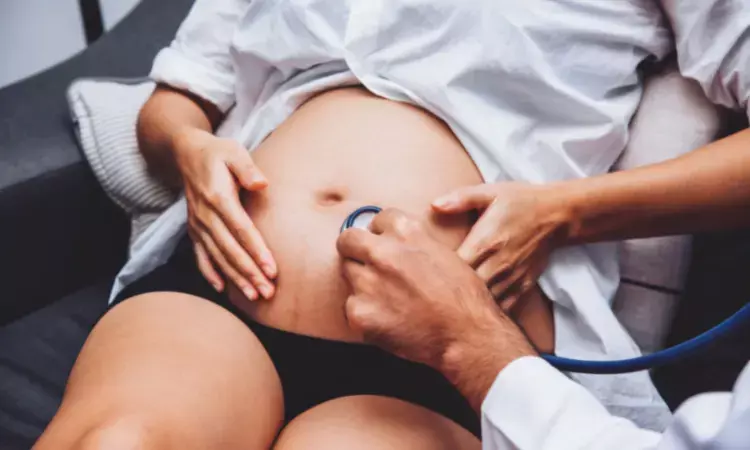- Home
- Medical news & Guidelines
- Anesthesiology
- Cardiology and CTVS
- Critical Care
- Dentistry
- Dermatology
- Diabetes and Endocrinology
- ENT
- Gastroenterology
- Medicine
- Nephrology
- Neurology
- Obstretics-Gynaecology
- Oncology
- Ophthalmology
- Orthopaedics
- Pediatrics-Neonatology
- Psychiatry
- Pulmonology
- Radiology
- Surgery
- Urology
- Laboratory Medicine
- Diet
- Nursing
- Paramedical
- Physiotherapy
- Health news
- Fact Check
- Bone Health Fact Check
- Brain Health Fact Check
- Cancer Related Fact Check
- Child Care Fact Check
- Dental and oral health fact check
- Diabetes and metabolic health fact check
- Diet and Nutrition Fact Check
- Eye and ENT Care Fact Check
- Fitness fact check
- Gut health fact check
- Heart health fact check
- Kidney health fact check
- Medical education fact check
- Men's health fact check
- Respiratory fact check
- Skin and hair care fact check
- Vaccine and Immunization fact check
- Women's health fact check
- AYUSH
- State News
- Andaman and Nicobar Islands
- Andhra Pradesh
- Arunachal Pradesh
- Assam
- Bihar
- Chandigarh
- Chattisgarh
- Dadra and Nagar Haveli
- Daman and Diu
- Delhi
- Goa
- Gujarat
- Haryana
- Himachal Pradesh
- Jammu & Kashmir
- Jharkhand
- Karnataka
- Kerala
- Ladakh
- Lakshadweep
- Madhya Pradesh
- Maharashtra
- Manipur
- Meghalaya
- Mizoram
- Nagaland
- Odisha
- Puducherry
- Punjab
- Rajasthan
- Sikkim
- Tamil Nadu
- Telangana
- Tripura
- Uttar Pradesh
- Uttrakhand
- West Bengal
- Medical Education
- Industry
Metallic element mixtures in first trimester linked to increased preterm birth risk: Vanadium identified as key factor in new study

China: The impact of environmental factors on pregnancy outcomes continues to be a critical area of research, with a recent study shedding light on the effects of exposure to multiple metallic elements during the first trimester. Conducted by a team of researchers, the study aimed to investigate whether prenatal exposure to various metals influences the risk of preterm birth.
Exposure to metallic elements mixtures consisting of vanadium (V), arsenic (As), cobalt, nickel (Ni), manganese, and chromium in the first trimester was associated with an increased risk of preterm birth (PTB), and V was considered the most important factor in the mixtures in promoting PTB incidence. The findings were published online in Maternal & Child Nutrition on June 24, 2024.
During pregnancy, exposure to metallic elements such as lead, mercury, cadmium, and arsenic can occur through various sources, including contaminated water, air pollution, and dietary intake. These elements are known to have toxic effects on human health and can potentially affect fetal development. However, limited studies focused on the effects of other metal mixtures.
To fill this knowledge gap, Yan-Ting Wu, Fudan University, Shanghai, China, and colleagues aimed to explore the relationship between maternal exposure level of the abovementioned six metallic elements detected in maternal plasma before 14 weeks of pregnancy and PTB risk in Shanghai, China by using four statistical methods. They also illustrated the non-linear relationship between metallic element exposure and gestational age.
For this purpose, the researchers performed a nested case-control study that enrolled 94 PTB cases and 282 controls. Metallic elements in maternal plasma collected during the first trimester were identified using inductively coupled plasma‒mass spectrometry. Researchers employed logistic regression, least absolute shrinkage and selection operator (LASSO), restricted cubic spline (RCS), quantile g computation (QGC), and Bayesian kernel machine regression (BKMR) to assess how maternal exposure influences the risk of preterm birth.
The study led to the following findings:
- Arsenic (As) and vanadium (V) were positively associated with PTB risk in the logistic model, and V remains positively associated in the multi-exposure logistic model. QGC analysis determined V (69.42%) and nickel (Ni) (70.30%) as the maximum positive and negative contributors to the PTB risk, respectively.
- BKMR models further demonstrated a positive relationship between the exposure levels of the mixtures and PTB risk, and V was identified as the most important independent variable among the elements.
- RCS analysis showed an inverted U-shape effect of V and gestational age, and plasma V more than 2.18 μg/L was considered a risk factor for shortened gestation length.
The study revealed the significantly positive joint effect metal mixture comprising As, V, Ni, Co, Cr, and Mn on preterm birth by applying different statistical methods.
"We further confirmed that vanadium was the most important risk factor for PTB among the metal mixture, and maternal plasma concentration of V above 2.18 μg/L was considered a risk factor for shortened gestation length," the researchers wrote.
"Further study is warranted to explore the underlying mechanism of V act on PTB occurrence," they concluded.
Reference:
Wu, T., Luo, C., Li, T., Zhang, C., Chen, X., Mao, T., Wu, T., & Huang, F. Effects of exposure to multiple metallic elements in the first trimester of pregnancy on the risk of preterm birth. Maternal & Child Nutrition, e13682. https://doi.org/10.1111/mcn.13682
Dr Kamal Kant Kohli-MBBS, DTCD- a chest specialist with more than 30 years of practice and a flair for writing clinical articles, Dr Kamal Kant Kohli joined Medical Dialogues as a Chief Editor of Medical News. Besides writing articles, as an editor, he proofreads and verifies all the medical content published on Medical Dialogues including those coming from journals, studies,medical conferences,guidelines etc. Email: drkohli@medicaldialogues.in. Contact no. 011-43720751


